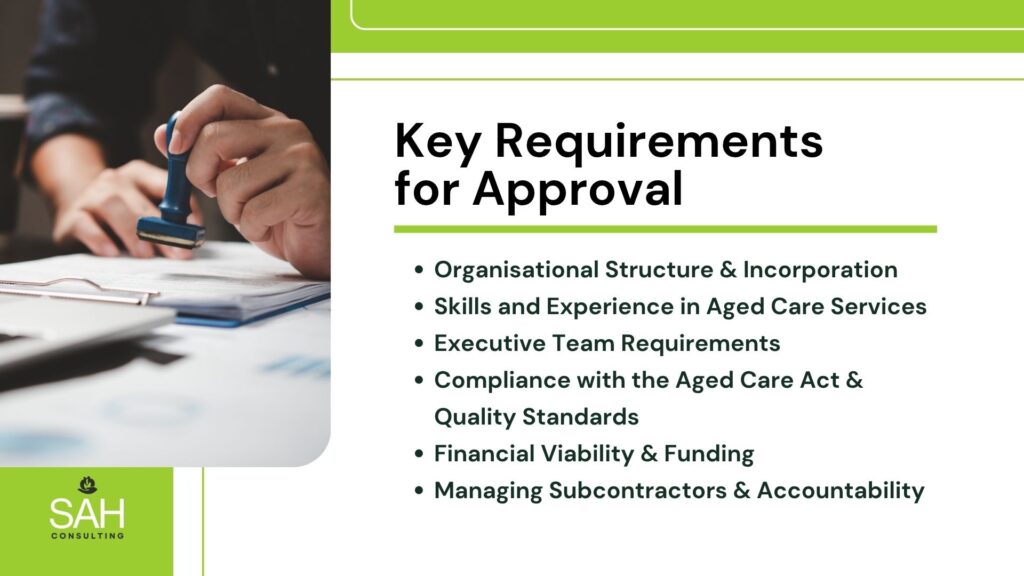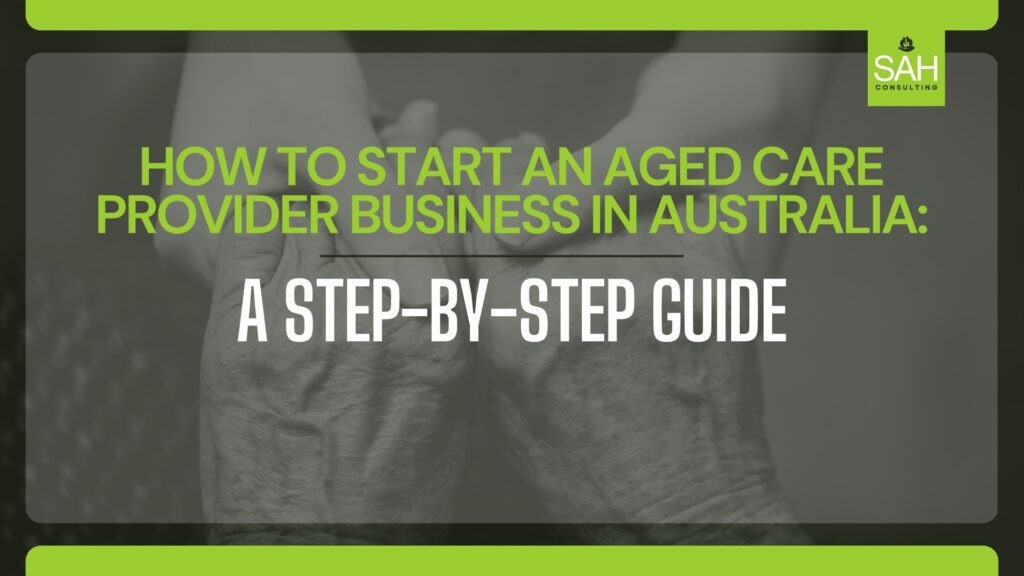Starting an aged care provider business in Australia is a meaningful way to support older Australians in need of care. However, the process of how to become an aged care provider involves a detailed application process, strict regulatory requirements, and a clear demonstration of your organisation’s ability to deliver high-quality services.
This guide is for aged care providers seeking clear, step-by-step guidance on how to start an aged care provider business. Whether you’re new to the industry or an existing provider looking to expand your services, this article will walk you through the application process, key requirements, and best practices to ensure your success.
By the end of this guide, you’ll have a clear understanding of what it takes to become an approved aged care provider in Australia, including how to complete the application form, meet compliance standards, and prepare for the financial and operational responsibilities of running an aged care service. Let’s get started.
Understanding the Application Process
The application process to become an aged care provider assesses your organisation’s suitability to deliver aged care in Australia. It ensures you can meet the standards set by the Aged Care Act 1997 and the Aged Care Quality Standards.
To succeed, you’ll need to demonstrate three key aspects:
What You Will Do
Clearly outline the services you plan to offer. Aged care services in Australia fall into three main categories:
- Residential Care: For older Australians who can no longer live independently at home.
- Home Care: Supports seniors with complex care needs to live independently in their own homes.
- Flexible Care: Includes programs like Short-Term Restorative Care (STRC) for early intervention to slow functional decline.
How You Will Do It
Provide comprehensive details regarding your policies, procedures, and governance frameworks. Clarify how these systems will guarantee the delivery of high-quality care and adherence to regulatory standards.
Who Will Be Involved
Emphasise the credentials and background of your essential personnel, which encompasses your Board or Governing body, executive team, and clinical staff (if relevant). All essential personnel must fulfil the required criteria, including police screenings and bankruptcy assessments.
It’s also important to be aware of the application process. Here are the key steps you need to know:
- Preparation: Ensure your organisation is incorporated under Commonwealth, state, or territory law.
- Submission: Complete the correct application form and provide all required documents.
- Assessment: The Aged Care Quality and Safety Commission will review your application, including a validity check, initial assessment, and formal assessment.
- Decision: If approved, you’ll be eligible to receive government subsidies to deliver aged care services.
Understanding these steps is critical to navigating the process successfully. Let’s break it down further.
Completing the Application Form
To complete the application form effectively, always use the latest version available on the Aged Care Quality and Safety Commission’s website. Tailor your responses to reflect your organisation’s unique operations—avoid copying generic text from legislation or guidance materials. Be descriptive and practical, explaining how your policies and procedures will function in real-life scenarios. Ensure all attachments are properly formatted (PDF, Word, or Excel) and kept under 10MB per email to avoid technical issues during submission.

Key Requirements for Approval
To successfully navigate how to become an aged care provider, you must meet several key requirements. These ensure your organisation is capable of delivering high-quality care while complying with regulatory standards.
Organisational Structure & Incorporation
Your organisation must be incorporated under Commonwealth, state, or territory law. Sole traders and unincorporated entities are not eligible. This legal structure ensures accountability and compliance with aged care regulations.
Skills and Experience in Aged Care Services
Members of your Board or Governing body must have experience leading aged care or similar services. All key personnel must meet mandatory requirements, including police checks and insolvency checks, as outlined in the Aged Care Act.
Executive Team Requirements
The skills and experience of every executive team member should be in harmony with their position. For home-based or residential care, it is essential to have a clinically responsible individual registered with AHPRA to supervise the provision of clinical care.
Compliance with the Aged Care Act & Quality Standards
You must outline your governance framework, including systems, policies, and procedures. Demonstrate how you’ll monitor and improve services to meet regulatory and financial obligations under the Aged Care Act and Quality Standards.
Financial Viability & Funding
Provide evidence of financial stability, such as capital investments, loans, or funding commitments. Show how your financial management systems will support reporting, compliance, and operational sustainability.
Managing Subcontractors & Accountability
If using subcontractors, you must ensure service quality through a detailed service agreement. This agreement should outline terms, conditions, and compliance mechanisms to meet aged care standards.
Support at Home Program under the New Aged Care Act 2025
The Support at Home Program is a transformative initiative by the Australian Government, set to commence on 1 July 2025. It aims to unify and simplify in-home aged care services, replacing the Home Care Packages (HCP) and Short-Term Restorative Care Programme (STRC). The Commonwealth Home Support Programme (CHSP) will transition to the new system no earlier than 1 July 2027.
Key Changes and Benefits for Providers
- Simplified Funding: The program streamlines funding arrangements, making it easier for providers to manage and deliver services. Funding will be more transparent and predictable, reducing administrative burdens.
- Improved Access for Care Recipients: Older Australians will have better access to tailored elderly care, including clinical services, home modifications, and assistive technologies. This increases the demand for high-quality providers.
- Unified System: By merging multiple programs, the Support at Home Program reduces complexity, allowing providers to focus on delivering care rather than navigating multiple funding streams.
For providers, this program offers a clearer, more efficient funding model, enabling them to allocate resources effectively and expand their services to meet growing demand. It represents a significant step forward in aged care in Australia, creating new opportunities for providers to deliver person-centred care.
How SAH Consulting Helps Aged Care Providers Register
Navigating the intricacies of registering for the Support at Home Program can be difficult. SAH Consulting streamlines the process, providing professional support to assist you in fulfilling all requirements effectively.
Our services involve explaining new regulations, crafting strong applications, creating compliant policies and procedures, and reducing delays. With SAH Consulting, you can securely concentrate on delivering quality aged care as we manage the intricacies of registration.
Key Takeaways
Becoming an approved aged care provider in Australia involves understanding the application process, meeting key requirements, and preparing for the new Support at Home Program. From demonstrating your organisation’s structure and financial viability to ensuring compliance with the Aged Care Act and Quality Standards, each step is critical to your success.
If you’re ready to take the next step in how to become an aged care provider, SAH Consulting is here to help. Book a free consultation with us today to navigate the registration process with confidence and ease.
